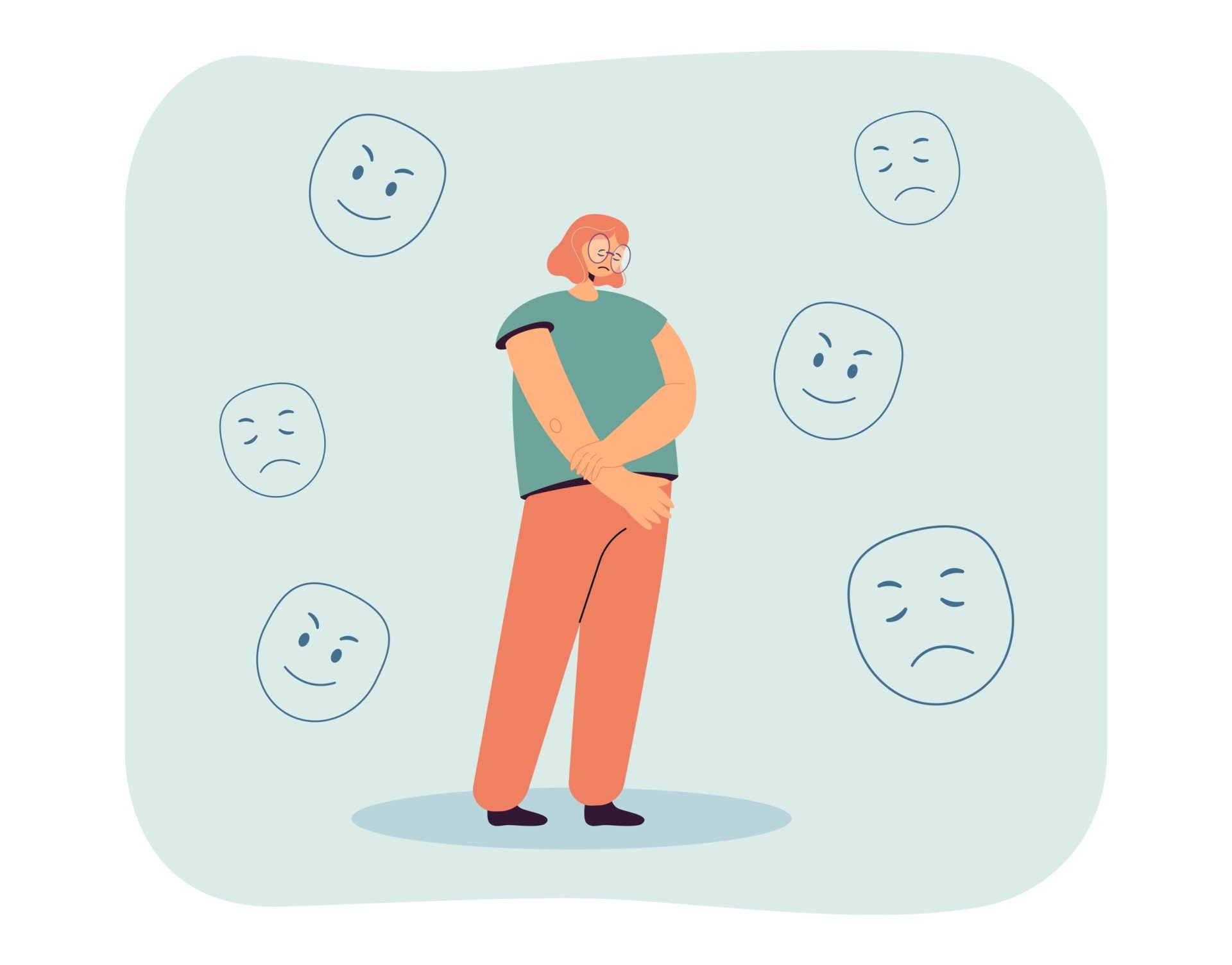
Key Points
- A new task shows that people vary in how well they group different experiences under the same emotion, like linking fear of heights and fear of predators.
- Difficulty in this skill—called affective abstraction—was tied to higher levels of alexithymia (trouble identifying feelings), depression, and autistic traits.
- These links suggest that affective abstraction might be a transdiagnostic process, shaping emotional life across different conditions.
- The findings highlight why some people may feel emotions without words, or struggle to explain feelings in therapy or relationships.
The challenge of putting feelings into words
Imagine standing on a cliff edge, heart racing, then later watching a horror movie where a monster leaps from the shadows. Both stir fear, yet they couldn’t look more different.
Still, your mind groups them together as the same emotion. This hidden mental process—linking varied experiences into a single emotional category—is what psychologists call affective abstraction.
For some people, that link is shaky. They might feel their chest tighten or their mood drop but can’t quite name what’s happening.
This difficulty isn’t just frustrating—it shows up in conditions like alexithymia, depression, and autism. A new online experiment tested whether differences in affective abstraction could help explain why.
Turning feelings into a lab test
Most studies of emotions rely on self-report surveys: “How often do you feel sad?” or “Do you find it hard to describe feelings?”
But self-reports have limits, especially when the problem is naming emotions in the first place.
To get around this, researchers designed a picture-matching game. Participants saw a cue image (say, a frightened animal) and had to pick which of two other images evoked a similar feeling.
Sometimes the match was obvious—fear paired with fear. Other times, it was trickier, crossing categories like matching a scary house to a snarling dog.
Two versions of the task teased apart emotional processing. One tested specific emotions (fear, sadness, amusement, calm), while the other focused on broader “valence”—whether feelings were pleasant or unpleasant.
Accuracy in these games gave a performance-based measure of affective abstraction.
What the experiment revealed
The results were striking. People who struggled more with abstraction—making less “normative” matches—also scored higher on measures of:
- Alexithymia: difficulty identifying and describing feelings.
- Depression: more frequent and intense depressive symptoms.
- Autism spectrum traits: tendencies like intense interests or challenges in social communication.
These patterns held even after controlling for age and gender. Importantly, slower reaction times didn’t explain the results, meaning it wasn’t just a matter of hesitation.
Follow-up analyses across multiple samples (Amazon Mechanical Turk workers and college students) showed that the effect was stronger in older, more diverse adults than in undergraduates—suggesting life stage and population differences matter.
Why abstraction matters for emotions
Think of affective abstraction as a filing system for feelings. Without it, each emotional moment is isolated—today’s fear doesn’t connect with yesterday’s.
That fragmentation makes it hard to build a vocabulary for emotions or use past experiences to make sense of new ones.
In therapy, this could explain why clients with alexithymia say things like, “I just feel off” but can’t go further.
For people with depression, reduced abstraction might fuel a sense of confusion or helplessness about shifting moods.
For autistic individuals, it may contribute to the challenge of communicating internal states to others.
Why it matters
This study suggests affective abstraction could be a hidden mechanism shaping mental health across diagnoses.
Rather than being unique to one disorder, difficulties in this skill may ripple across conditions—from making it harder to identify sadness before it deepens into depression, to complicating emotional communication in autism.
For clinicians, tasks like the one used here could complement self-report tools, offering a window into how clients actually process emotions.
For everyday readers, the message is reassuring: if you’ve ever struggled to explain your feelings, it might not mean you lack them—it may simply reflect how your brain organizes emotional experiences.
Takeaway
Emotions are more than fleeting sensations. They’re categories we construct, linking today’s fear to yesterday’s and tomorrow’s.
This research shows that when those links weaken, the ripple effects touch everything from therapy to daily relationships. Understanding affective abstraction may one day help us design better interventions for people whose feelings are vivid but wordless.
Reference
Fiedler, S. A., Lee, K. M., Nook, E. C., Lindquist, K. A., Gendron, M., & Satpute, A. B. (2025). Affective abstraction predicts variation in alexithymia, depression, and autism spectrum quotient. Emotion, 25(7), 1730–1749. https://doi.org/10.1037/emo0001497


